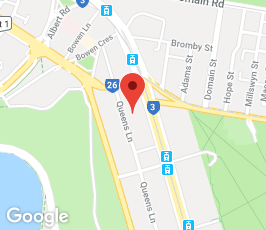Developing a Backyard: a Guide for First-time Property Developers
By Danielle Hart and Daniel Walachowski
If you are interested in property development, developing your own backyard or subdividing an existing house is often the first stepping stone. But, before you start your first development, it’s crucial that you understand how subdividing and developing your backyard can affect the main residence capital gains tax (CGT) exemption on your current home.
Keep in mind main residence exemptions
Under Australian tax law, your main residence is generally exempt from CGT whenyou sell it. This exemption can also apply to the land adjacent to your home, for up to two hectares, provided it is used for private purposes in conjunction with the dwelling.
However, when you subdivide your backyard, each newly created block is treated as a separate asset for tax purposes. And, once you have subdivided your existing block, the newly created lot usually loses its main residence exemption, because it is no longer primarily part of your home.
If you sell the vacant subdivided block, CGT may apply – however, you might be able to sell, or even value, the new lot at a premium, compared to what it was worth as part of your original block [apply a market value uplift to the newly created lot’s cost base].
The tax consequences of building a new house on your subdivided block
If you decide to build a new dwelling on the subdivided block and sell it, you might face different tax consequences. The Australian Taxation Office (ATO) may consider that you are a ‘property developer’, meaning any profit you make from the sale will be treated as ordinary income rather than a capital gain. As a result, you might be up for a higher tax bill, without being able to access the 50% CGT general discount that applies in other cases.
Alternatively, if you keep the new dwelling as a rental property, your CGT consequences will change. Depending on what you intended when developing the property, the ATO may require you to be registered for GST. Furthermore, if you sell the new residential property within five years you may be considered a business enterprise, and GST will be applied on the sale of the new residential premises.
Lessons for first-time property developers
We often see first time property developers disregarding their GST obligations, and forgetting about the new residential property rules and margin scheme requirements. The latter can affect their tax outcomes significantly, depending on how they acquired their property originally. First timers can also run into higher than expected GST obligations, which are payable to the ATO at settlement. It’s therefore critical that they seek professional advice to ensure they report the correct GST on their activity statements.
What we often see is this: a developer renovates their existing home, subdivides their backyard and builds on it, then moves into the new home and sells the old. Their new home becomes their primary residence, and the old home can be sold as their previous residence.
This means they can claim a main residence exemption for the entire development, which is a great result, tax-wise. But it’s important to get the timing right around which property is the main residence across the timespan of the development.
Get the right advice from your accountant
Backyard developments can create significant increases in the value of your property, but they can also impact your main residence exemption and lead to unexpected tax liabilities. Don’t assume that every backyard development is a mere ‘realisation of an asset’! Instead, if you are considering a development like the above examples, make sure you seek professional tax advice early to avoid costly surprises.
Our next article in the property development series will focus on larger scale property developments.
Please do not hesitate to contact us should you have any questions.





